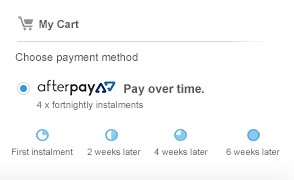Novation Summit
Two-part 16-voice 61-key Polyphonic Synthesiser
Novation's flagship two-part 16-voice 61-key polyphonic synthesiser
Summit’s digital New Oxford Oscillators offer subtractive, FM and wavetable synthesis, and feed into genuine analogue dual filters, distortion and VCAs. The multitimbral engine enables merging and combining of two complete and independent patches, while up to 16 simultaneous voices deliver enough harmonic depth for even the richest of pads.
The best sounding synthesiser Novation has ever made
Summit doubles the power of Peak’s digital New Oxford Oscillators up to 16 voices and two parts, and adds a wealth of new features and a premium-quality five-octave keyboard. A synth much greater than the sum of its parts, it gives the serious producer or performer everything they need to design and play stunning basses, leads, arps, pads, effects and beyond.
Totally tactile sound design
Summit takes Peak’s architecture and workflow to new heights, with a swathe of extra front panel controls for hands-on wrangling of FM, effects, LFOs and more; dual filters with six LP/HP/BP combinations; audio input for processing external sources with the onboard effects; and auxiliary audio outputs.
Analogue where it matters
The true stereo analogue signal path comprises dual analogue multimode filters, analogue VCAs and three stages of analogue distortion – pre- and post-filter, and post-VCA. With roots in the legendary OSCar, via Bass Station II, Summit’s analogue credentials are truly impressive.
Wavetable Editor
The Wavetable Editor unleashes the power of the wavetable oscillators. It features drawing tools and a Live Edit mode, so you can draw your own oscillator shapes and preview them in real time. Audio import lets you load in your own audio to be used as the oscillator waveform. Included is a curated selection of space-themed audio from the NASA sound library, plus exclusive content from production giants Noisia.
Two Peaks in one synth - and then some
Two Peaks in one synth - and then some
The 16-voice, multitimbral engine combines two simultaneous patches. Split or stack them for keyboard-divided or layered sounds, or switch the entire synth between two separate and independently controlled setups, perhaps using one as an effects processor for an external input source.
Summit can also use all your Peak patches.
Our best keyboard ever
Five-octave, semi-weighted, velocity-sensitive keyboard with aftertouch – the same premium-quality keybed as introduced with our SL MkIII controller keyboard.
New Oxford educated
Digital New Oxford Oscillators are capable of subtractive, FM and wavetable synthesis. Waveforms are generated directly on the FPGA (Field Programmable Gate Array) chip, using 24MHz bitstream processing; and adjustable drift and divergence emulate the inherent and often desirable instability of analogue circuits.
True analogue filters and distortion
The New Oxford Oscillators output to true analogue filters, with origins in the classic OSCar synth, and three stages of analogue distortion give you ample saturation options.
Dual filters
Summit’s dual filter is switchable between six paired combinations of low-pass, high-pass and band-pass modes at 12dB/octave, or any single mode at 24dB/octave, for a broad range of sonic possibilities.
Hands-on sound design
Packed with modulation sources for deep sound design – LFOs, envelopes, Animate buttons and more. Extended controls see FM parameters, envelope loop switches and LFOs 3/4 moved from Peak’s menu system to the front panel, for easy programming and tweaking.
Audio in and auxiliary audio out
Hook up external instruments for processing with Summit’s onboard effects, while using it as a synth at the same time.
Powerful effects
Onboard reverb, chorus and delay effects are hosted on the FPGA. They’re also controlled directly from the front panel, and available as modulation targets in the dedicated FX Mod Matrix.
For more information, click here to visit the manufacturers website.
New content loaded





























